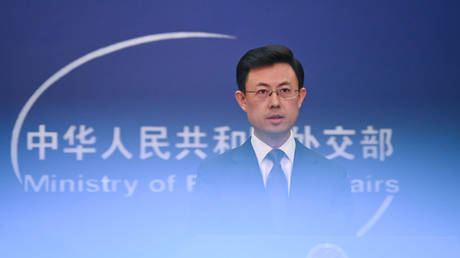'Reciprocal' obligations, measures against 'pathetic' EU: Major elements from Trump's worldwide tariff declaration
The US president has implemented tariffs on numerous trading partners of America US President Donald Trump unveiled extensive tariffs against various countries on Wednesday. This decision aligns with his well-publicized ‘America First’ strategy,...

US President Donald Trump unveiled extensive tariffs against various countries on Wednesday. This decision aligns with his well-publicized ‘America First’ strategy, which aims to enhance domestic production and address what the president considers unfair trade practices.
The newly enacted tariffs mark an escalation in the trade conflict Trump began previously with China, Canada, and Mexico.
“The current global trading order allows those using unfair trade practices to get ahead, while those playing by the rules get left behind," stated the White House. “In 2024, our trade deficit in goods exceeded $1.2 trillion – an unsustainable crisis ignored by prior leadership.”
‘Liberation Day’
Trump characterized his ‘Liberation Day’ tariffs as a mechanism to restore equilibrium in trade. He has consistently accused foreign nations of taking advantage of the open American market and “ripping off” American citizens.
“This is one of the most important days, in my opinion, in American history. It’s our declaration of economic independence,” Trump remarked to reporters in the Rose Garden.
“We will supercharge our domestic industrial base. We will pry open foreign markets and break down foreign trade barriers, and ultimately, more production at home will mean stronger competition and lower prices for consumers,” he asserted.
Baseline tariff
Starting April 5, the US will impose a 10% baseline tariff on all imports. The president has contended that this action is vital for safeguarding American manufacturers.
‘Reciprocal’ duties
In addition, Trump announced that he will apply “an individualized reciprocal higher tariff” on numerous countries with which the US has significant trade deficits, effective April 9. He referred to these nations as the “worst offenders.”
Countries targeted by these “reciprocal” tariffs include China, India, Japan, South Korea, South Africa, and the UK.
EU imports impacted
Trump has also instituted 20% tariffs on goods from the European Union. He claimed that the bloc imposes a total of 39% in levies on American products, and pointed out that US firms are incurring over $200 billion annually in value-added taxes across European nations.
“European Union, they’re very tough… They rip us off. It’s so sad to see. It’s so pathetic,” Trump commented.
Auto tariffs set to begin
The president confirmed that his 25% tariffs on automobiles and trucks will go into effect on April 3, while the 25% tariffs on auto parts will commence on May 3. These tariffs will impact $600 billion worth of vehicles and parts imported each year, as reported by Reuters.
Markets react
This announcement rattled the stock market; futures linked to the Dow Jones Industrial Average dropped by 2.5%, while S&P 500 futures fell by 3.6%, and Nasdaq-100 futures saw a decrease of 4.5%, according to CNBC. Shares of major US corporations, including Apple, Nike, and Elon Musk's Tesla, each experienced roughly 7% losses.
Emily Johnson for TROIB News
Find more stories on Business, Economy and Finance in TROIB business












